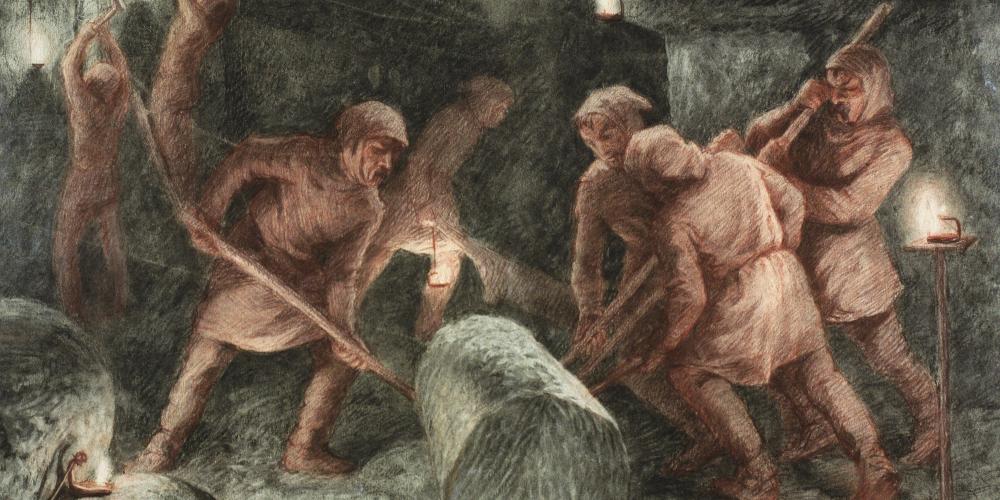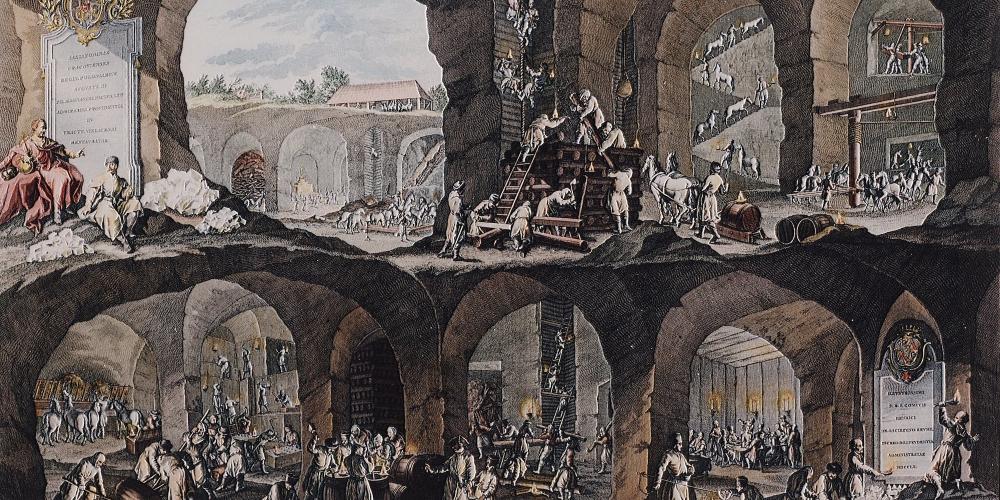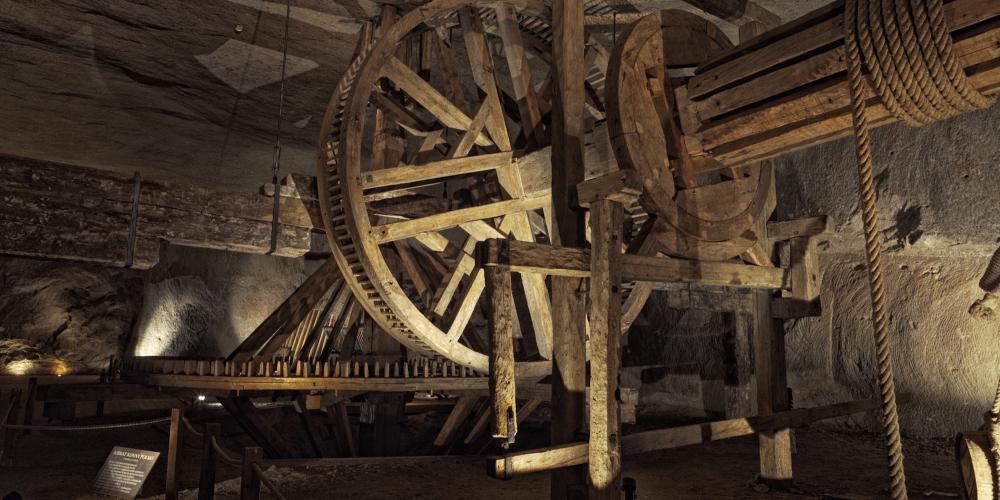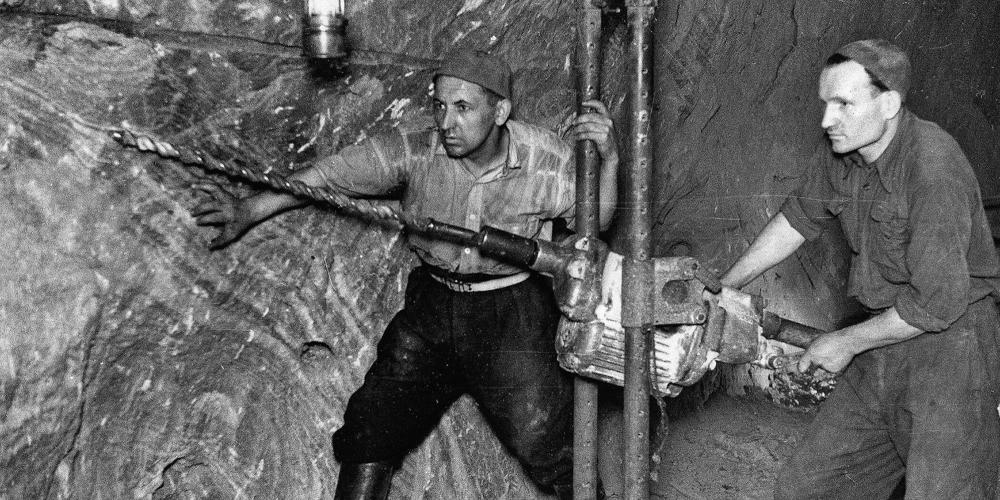Royal Salt Mines in Wieliczka and Bochnia, Poland

The Wieliczka Salt Mine was inscribed in the very first UNESCO World Heritage List in 1978, along with the nearby Historical Centre of Kraków and just 10 other sites from around the world. So how did a country behind the "Iron Curtain" achieve such early success in protecting its heritage? Although, or perhaps, because Poland was ravaged by past wars, the country was very proud of its long history and culture, and intent on preserving its national heritage and monuments. In fact, the Polish authorities had already decided in 1928 that the old mines should be turned into monuments—an innovation at that time—and Poland was among the first signatories of the World Heritage Convention in 1972

Perhaps most important in securing its place on the UNESCO List, was the fact that Wieliczka is the only mining facility that had been continuously active for 700 years—resulting in a huge underground kingdom with 240 kilometres of galleries and 2,350 chambers, reaching the depth of 327 metres—a massive feat of human effort and ingenuity. Full of historical machines, tools, salt sculptures and artworks, it forms a unique and authentic record of the development of mining techniques and a chronicle of mining culture, beliefs and customs throughout centuries.
In addition to the Wieliczka Salt Mine, the World Heritage site includes the Bochnia Salt Mine and the Saltworks Castle in Wieliczka (the seat of the Cracow Saltworks management from the 13th century to 1945)—which also possess great historical value, and were added to the UNESCO listing in 2013, under the proud name 'Royal Salt Mines in Wieliczka and Bochnia'—a priceless cultural asset and an absolute must-see in Poland.

The two mines offer unique and complementary experiences. At Wieliczka, 64 metres below the surface, you'll enter an underground metropolis that miners built over centuries. A narrow shaft becomes a winding tunnel that opens onto a lake. Nothing prepares you for the moment you arrive at the Chapel of Saint Kinga, an enormous hall lit by chandeliers that took three men 67 years to carve and decorate. The main route goes for 2.5 kilometres through 20 chambers—a fraction of the stunning maze created underground. Here you can attend music concerts and parties or feel the therapeutic power of salt in the health resort. Bochnia mine is located 30km away and while it's lesser known, it shouldn't be missed. Ride the underground train or take the world’s only ferry crossing of an underground chamber flooded with brine—if you dare...
'White Gold'
Why was so much labour, ingenuity, and creativity spent in the salt mines? Prior to industrialisation, it was extremely expensive and labour-intensive to harvest the mass quantities of salt necessary for food preservation and seasoning. This made salt an extremely valuable commodity. Entire economies were based on salt production and trade, and Poland's medieval capital, Cracow was fortunate to be close to some of the richest salt deposits in the world. The History of Salt in Wieliczka and Bochnia story below describes the formation of the salt beds, the early development of salt brewing in Bochnia and Wieliczka, and the discovery of rock salt in the second half of the 13th century.

Knowing the strategic significance of salt extraction and trading, the Polish princes and kings quickly established their monopoly over the Saltworks in the early Middle Ages. The salt mines, salt brewing facilities, storage facilities, and workshops in Wieliczka and Bochnia were combined into a single enterprise known as the Cracow Saltworks; since then, all profits from the production and sale of salt were channeled into the royal treasury. At times, a third of the kings' receipts derived from the Saltworks. The kings used the "white gold" to maintain their courts, pay the clerks, and build magnificent castles and churches. The income also funded the first Polish university in Kraków in the 14th century and the managers of the salt works erected impressive town houses across the region.
How to Get There
Wieliczka and Bochnia are medium-size towns, in the Małopolska region, just 5 and 35 km from Kraków. Kraków itself is a great base for day trips to the many attractions throughout the area. All of these attractions and experiences listed below are within 100 km of Kraków, within two hours drive.
Foreign tourists generally arrive by airplane, although Kraków can also be reached by transnational rail and bus routes. Kraków's Balice airport has many connections to and from European cities. From the Balice airport, you can take the fast agglomeration train to the centre of Kraków in a half hour, and further to Wieliczka within 25 minutes. It takes about 50 minutes to get to Bochnia from Kraków on a similar train. You can also take buses, trams or taxis, which are more affordable than in Western Europe. The airport is also connected with Wieliczka and Bochnia by a highway, and you can reach other locations listed here by coaches and private mini-buses that depart from the Main Station in Kraków.
When to Visit
Every season of the year is good for enjoying the Małopolska attractions. The royal salt mines in Wieliczka and Bochnia, unlike other European mines, are open all year round, with a few holiday exceptions. The peak tourist season is between June and September, when throngs of tourists visit the mines, especially Wieliczka, so Bochnia is a great place to experience the mines at that time, without the crowds. If you have not booked a group visit, you might have to wait in a queue to enter. To experience Wieliczka without rush or crowds, come in late autumn, winter or early spring. Weather doesn't matter deep underground! You can also enjoy the Christmas and winter aura of the Polish mountains. A visit in spring or summertime means longer, warmer days and more hours of sightseeing and outdoor activities.
How to Visit
To be fully acquainted with the Kraków Saltworks, you should devote a day and a half to them. On the first day, in Wieliczka, you can see the underground tourist route and the underground Museum, the Saltworks Castle, the graduation tower, mining shafts and wander around the charming town. On the second day, you can go to Bochnia to see the salt mine there. A trip to Bochnia may be easily combined with a trip to Niepołomice, where you can relax or hike in the old forest and visit the Wiśnicz Castle. You should spend at least 2 days in Kraków to appreciate its magnificent monuments and vibrant atmosphere and savour the night-life, cruise along the Vistula River, and climb at least one mound. To enjoy all of the Małopolska attractions featured here, plan at least 10 days in the region.








